Technology
Should smartphones be banned for under 16s?
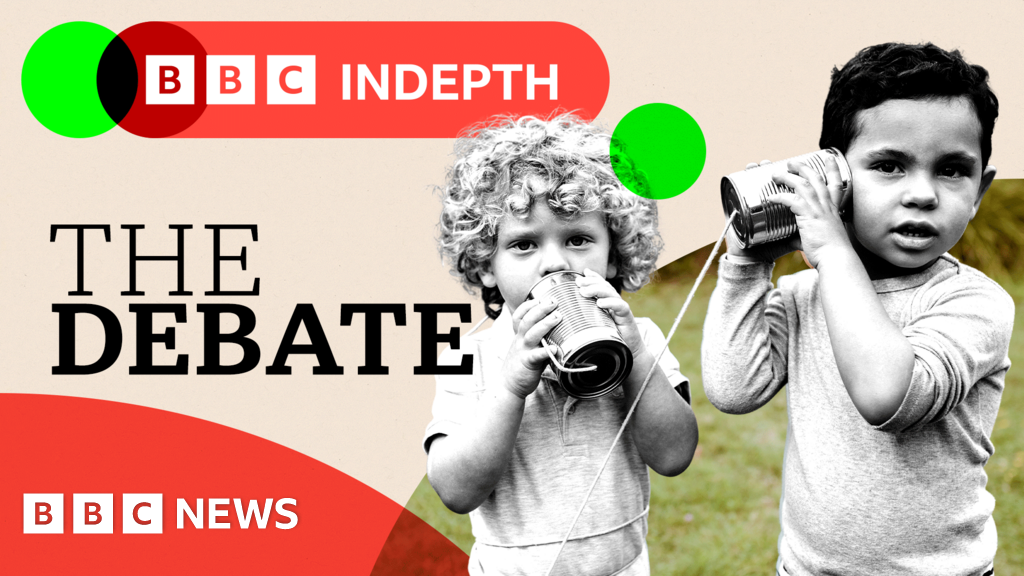
 BBC
BBCSmartphones have worked their way deep into our lives and have become indispensable for work and socialising.
Unsurprisingly, many children want them too, but here we are much less sure of the benefits they bring. Many parents worry they are addictive and expose children to inappropriate and harmful content. A growing number think stronger restrictions are needed.
Others suggest some of the risks are overblown. They argue phones provide good opportunities for child development, including socialising, and that the evidence of harm is neither as convincing nor as conclusive as critics suggest.
I hosted a debate on WhatsApp between an academic and a campaigner, focusing on whether there’s a case to be made for stronger restrictions on children’s use of smartphones. What follows is an edited version of their conversation.
Meet the participants
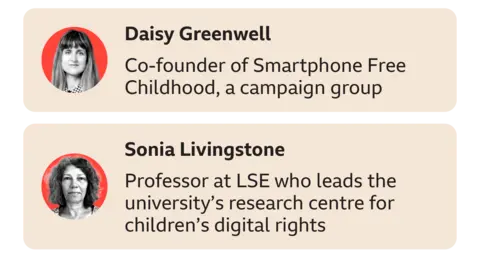
To ban or not to ban?

Daisy Greenwell from Smartphone Free Childhood, a grassroots campaign group against big tech, let’s start with you.
What kind of ban or restrictions do you want and why?

Hi Chris.
Firstly, we think banning is unhelpful framing. We’re not calling for an outright ban on smartphones.
Parents have been put in an impossible position by the tech companies – we either give our kids access to a harmful product (ie a smartphone with unrestricted access to the internet and social media) or go against the cultural grain and risk alienating them from their peer group.
Governments need to do better to help parents and protect young people.
Put simply, we believe that until tech companies can prove that their products are safe for children, children shouldn’t have unrestricted access to them.

What restrictions would you like to see?

We believe there should be default age-appropriate set up of smartphones. Age-verification technology exists – how can it be implemented at a device and content level to ensure children can only access services that are appropriate for them?
Despite the 13+ minimum age requirement for social media, 51% of British children under 13 use it. They should not be on these platforms as they are not safe, so we need to find a way of enforcing that as soon as possible.
We also believe the government should implement a mandatory ban on smartphones in schools, given that only 11% of schools currently have an effective ban, and all the the research proves that they are hugely disruptive for learning, behaviour and lead to serious safeguarding issues.


Sonia Livingstone, you’re a social psychologist specialising in how tech affects children’s lives. Does the evidence support what Daisy is saying about the risks?

Hi Daisy.
I think there are several points we could agree on, especially about avoiding the word ‘ban’…
Some points are trickier, though, including the application of age assurance, which is important for high-risk services but care is needed as it has privacy implications for the entire population.
On the question of evidence, it’s a mixed picture. There’s a little evidence supporting restrictions on smartphones in schools. For the rest of children’s lives, we need to consider the positives as well as the negatives of phone use.

Of course I agree and am aware of potential positives of smartphones for children. Wouldn’t it be great if all children could benefit from the upsides of this technology without any of the harms?
Unfortunately we’re a million miles away from that utopia at the moment.
That’s why something needs to change urgently.

Sonia, do you think it’s a mistake for schools to introduce bans?

We’re just reviewing the research now. It’s pretty clear that parents, teachers and students would like clear and effective restrictions on use of phones in class.
The trouble is that we have had a policy of ‘bring your own device’ and of incorporating digital technologies into the classroom for educational purposes.
So I suggest it’s time to review our edtech policy more broadly. This hasn’t been updated since the pandemic, and is currently benefiting big tech and data brokers more than children, according to the evidence.
When we consult children, they agree with some of the risks and problems that Daisy points to.
But they also value their phones, precisely as a way of staying in touch with friends… Our society has cut many of the ways in which children have long been able to play or socialise outside the home.

The network effects of this technology and the sophistication of their addictive design means parents and young people are fighting an impossible battle.
Who should regulate children’s mobile phone use?
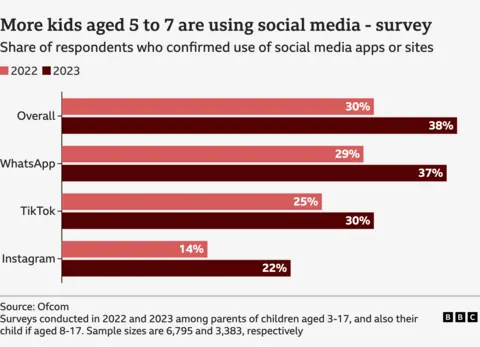

Daisy – it’s hard for a child to buy a phone, and if they have one it’s probably come from mum or dad. Why not just leave it to parents to decide?

It’s totally unfair to put the onus on the parents.

I agree that the burden should be shifted to companies. Not only are they amplifying the harms, but also they refuse to provide more age-appropriate services and a wider diversity of products.

Sonia – are the risks as grave as Daisy suggests? Does the evidence support that?

There’s a case to be made for both risks and benefits; and both appear to be greater for more vulnerable children.
So yes, children need better protections, for sure, and yes, the present situation is problematic for many and dangerous for some.

The entire business model of social media giants is predicated on harvesting as much attention as possible. Smartphones and addictive social media apps have lured children away from the activities that are indispensable to healthy development – outdoor play, face-to-face conversations, sleep.

The question is how to achieve the balance that the public wants between regulation vs education, individual choice vs limits for all.
If we ask: are smartphones bad for children, the evidence suggests yes in some ways, no in others, and it depends on the child and the circumstances.

Yes it’s complicated. You can always find two sides to any academic debate, but we think we need to take a step back and question the societal norm, which is to give children smartphones when they’re younger and younger… Do they need them?

Now it sounds like you are putting the blame on parents, Daisy?

No – we’re saying this is a huge societal issue that needs imagination and bold action.

Moreover, if we ask what the causes of child wellbeing or poor mental health are, technology use is one among many factors – let’s start with poverty, family stress, lack of play and community resource, anxiety about the future…
Are children addicted to smartphones?

Sonia – some researchers have disputed the idea that they are addictive, is there good scientific evidence of that?

I think Daisy has in mind the dark patterns and attention-grabbing incentives built into social media and game design; these certainly have adverse effects.
Clinicians are just careful about ‘addiction’ because alcoholism, drug addiction etc are rather different.
Still, they agree that some 1-3% of the child population meets the threshold for clinical addiction to tech.

What about behavioural addiction?
We all know what addiction to our smartphones feels like… it seems ludicrous to question whether they’re addictive or suggest only 1-3% are.
We know that children are spending four to nine-plus hours a day on these devices.

I’m trying not to be ludicrous, and am happy to offer citations to clinical research.

Daisy – what needs to change, would you increase the age limits on social media for example?

We believe that until social media platforms can prove they are safe for children, children shouldn’t be on them. We’re very interested in what the Australian government is exploring.

All interesting proposals, and as ever, the devil is in the detail. Three questions from me:
1. Is the British public ready for mandatory age verification? They will have to get used to giving up their personal information to companies. Can we trust those companies with such sensitive information?
2. Yes, let’s enforce age limits. But first, let’s debate the right one – 13 is pretty much an accident of the Children’s Online Privacy Protection Act, not a thought-through child-protection policy.

3. How safe should platforms be? As safe as roads? Or swimming pools? And how can we balance risks with opportunities?

On your first question, the public is crying out for something to change. It’s not up to us to figure out the workings of age-verification technology, but we shouldn’t give up because it’s complicated.
To your second question, totally agree, we don’t think 13 is the right age – it’s based on 25-year-old US data law, not child wellbeing – but it is the age at the moment so it should be enforced.

Yes, the public wants change, and rightly so. But sadly, unless we can propose workable solutions, we may find our calls unheeded.

This sounds defeatist – it shouldn’t be on parents to come up with all the policy solutions in what is an incredibly complicated space.

I don’t think it is all on parents. Academics, regulators, civil society, children’s charities, lawyers and technologists are all actively seeking ways forward.

How young is too young to be on social media, Sonia?

I’m afraid I consider that the wrong question. We may need another debate.

Why? It seems a question that nobody wants to answer

OK, let me give it a try.
1. The right age for one child is not right for another.
2. It depends what the child wants to do online.
3. It depends if the child is vulnerable or supported.
4. It depends what digital product or service you are talking about.

Would you apply the same logic to the age of consent?!

That’s yet another debate – am not refusing to answer, but it will take time. Perhaps you have quick answers to big problems, but I like to weigh the evidence.

Daisy – what about Sonia’s third question. We do let children take risks where we think there are rewards too in sport etc.

It’s interesting framing – it certainly shouldn’t be driving kids to suicide, eating disorders, anxiety, depression, etc.

Do children benefit from having smartphones?
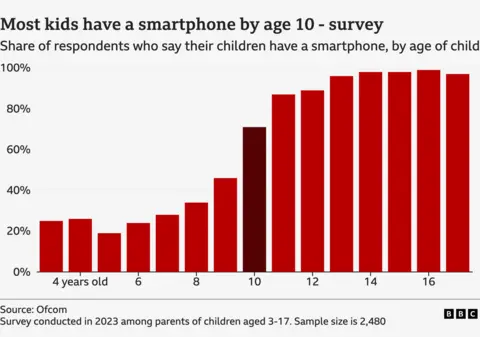

Do you accept, Daisy, that there are benefits to owning these devices and is it right to cut children off from those benefits that adults enjoy?

The upsides of technology are clear… Smartphones are incredibly useful. We carry around all-powerful supercomputers in our pockets that know everything and are connected to everyone, everywhere… They’ve transformed the way we live.
But at what cost? We need to question the assumption that all technological advancement is social progress.
Kids don’t actually need to be connected to the internet 24/7. They don’t need phones for work or to organise diaries etc.
A brick phone can keep them connected to family and friends.

But don’t children need to learn how to use these tools that many adults find essential?

A five-year-old can learn how to use Instagram in about four minutes – that’s really not a valid argument.
Do children need to learn how to have sex before they’re 16, or drive before they’re 17? Both things that will be important to their adult lives.

Also we aren’t saying don’t use tech – just don’t have unrestricted access to the internet in your pocket 24/7.

The thing is, society has involved the internet – typically accessed via a smartphone – in most domains…
So it’s hard to know where to start. One place might be the recent Good Childhood Report. It gives a decent measure of what’s going wrong.

Why shouldn’t children have healthy, intentional, non-addictive relationships with technology that enhances their lives?
We would say the solution starts with people power, not more academic quarrels.

We’re going to wrap up now. Thank you both – it’s been a lively debate.

This debate has demonstrated that even people who agree that tech firms need to do more can disagree passionately over how far we should restrict children’s smartphone use.
The UK government says it has no plans to introduce a smartphone ban for under 16s, and there may be no consensus over how much change is needed, but change is happening nonetheless: tech firms are rolling out new child-safety features, schools are adopting new policies and the technology itself continues to evolve, creating more opportunities and risks.
Disagreement over how we keep children safe online will likely be with us for some time.
BBC InDepth is the new home on the website and app for the best analysis and expertise from our top journalists. Under a distinctive new brand, we’ll bring you fresh perspectives that challenge assumptions, and deep reporting on the biggest issues to help you make sense of a complex world. And we’ll be showcasing thought-provoking content from across BBC Sounds and iPlayer too. We’re starting small but thinking big, and we want to know what you think – you can send us your feedback by clicking on the button below.
Servers computers
Why I Bought Two StarTech.com 6U Wall Mount Network Racks!

I have installed 2 of these racks at this point – it is the perfect size for my security cameras, home automation controllers, Internet ISP routers, local switches, and more. It makes a compact and effective base for all your electronics in one hub. So easy to mount on the wall with 16″ spacing, just like interior stud distances. Highly recommend!
Get yours here – https://amzn.to/3YQLeyD
As an Amazon Associate, I earn a commission from qualifying purchases at no cost to you. Amazon links are often provided in the video descriptions and comments on this channel.
StarTech.com 6U Wall Mount Network Rack – 14 Inch Deep (Low Profile) – 19″ Patch Panel Bracket for Shallow Server and IT Equipment, Network Switches – 44lbs/20kg Weight Capacity, Black (WALLMOUNT6)
source
Technology
TORRAS Ostand Spin flagship iPhone 16 case hands on, more
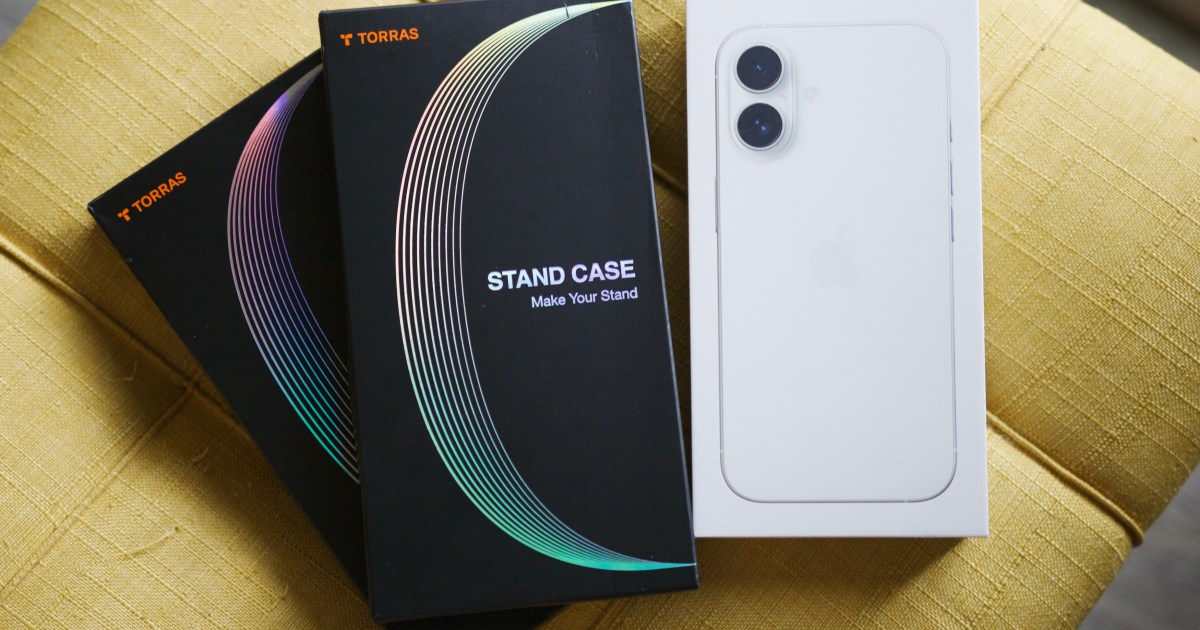
While we have featured TORRAS quite a bit here at Digital Trends, including the brand’s latest iPhone 16 cases, we’re doing something a little different this time around. We’ve had the opportunity to both unbox and get our hands on the TORRAS Ostand Spin for the iPhone 16 and we’re here to share a little about the experience. Our mobile editors did the unboxing and took some fantastic shots. We’ll also take a closer look at some of the case’s best features, and how they enhance the average iPhone 16 experience.
An elegant design: Make Your Stand

It’s a point we tend to harp on a lot, but it makes sense. Your new iPhone 16, iPhone 16 Plus, or iPhone 16 Pro, whatever the model, features an exquisite design. It’s a shame to cover that up with something bulky for the sake of improving durability. The TORRAS iPhone 16 series cases are designed with that same mindset, evoking true elegance and bravado. Starting with the curved back and rounded corners they recreate the sleek aesthetic of Apple’s design. Not only that, they have an anti-slip texture that’s skin-friendly and allows for a more secure grip — you’re less likely to drop your phone.
The cases don’t add much bulk to your device either. The contours match your device, on top of providing a host of features to enhance your experience. TORRAS set out to provide cases that help “make your iPhone live longer,” and it’s clear they’ve succeeded.
Take a look for yourself
Here are some of the great photos the editing team captured of the TORRAS Ostand Spin unboxing and hands-on:
As you can see, there are three color options across the TORRAS iPhone 16 series cases, and the darker color Dune fits perfectly with this year’s new color for iPhones — Desert Titanium.
How do they improve the iPhone 16 experience?

The most prominent feature is the flip-out magnetic ring design on the back, which TORRAS is a pioneer of. Replacing those stick-on and auxiliary pop rings, this one is built directly into the case. It flips out, with a 360-degree spinning function — to adjust to multiple usage scenarios — and also doubles as a stand. That way, if you’re at a restaurant, or doing something in the kitchen, or just want your hands free you can prop up your phone easily.
Some other things you can do with the ring include:
- Clipping it to the screen on your computer as a second display or for use as an impromptu webcam.
- Setting the phone up for still photography, selfie shoots, or other lifestyle shots.
- Standing up your phone as a reference display while working out or cooking, allowing you to follow along with guides while keeping your hands free.
- Place it on a nightstand or nearby table while in bed to watch media, browse TikTok, and other content.
Beyond the built-in ring stand, the TORRAS OStand Spin also has a MagSafe-ready magnet. It offers double the strength of a regular MagSafe magnet, per TORRAS’ claims. That allows you to connect your iPhone 16 with MagSafe accessories and Qi2 wireless chargers without added hassle, even with the case on. Pair your phone with a power bank to expand the battery life, attach to metal surfaces to hold it up or take photos, or secure it to car and bike mounts while you’re busy steering.
Technology
Apple developing lighter smart glasses with AI, claims report
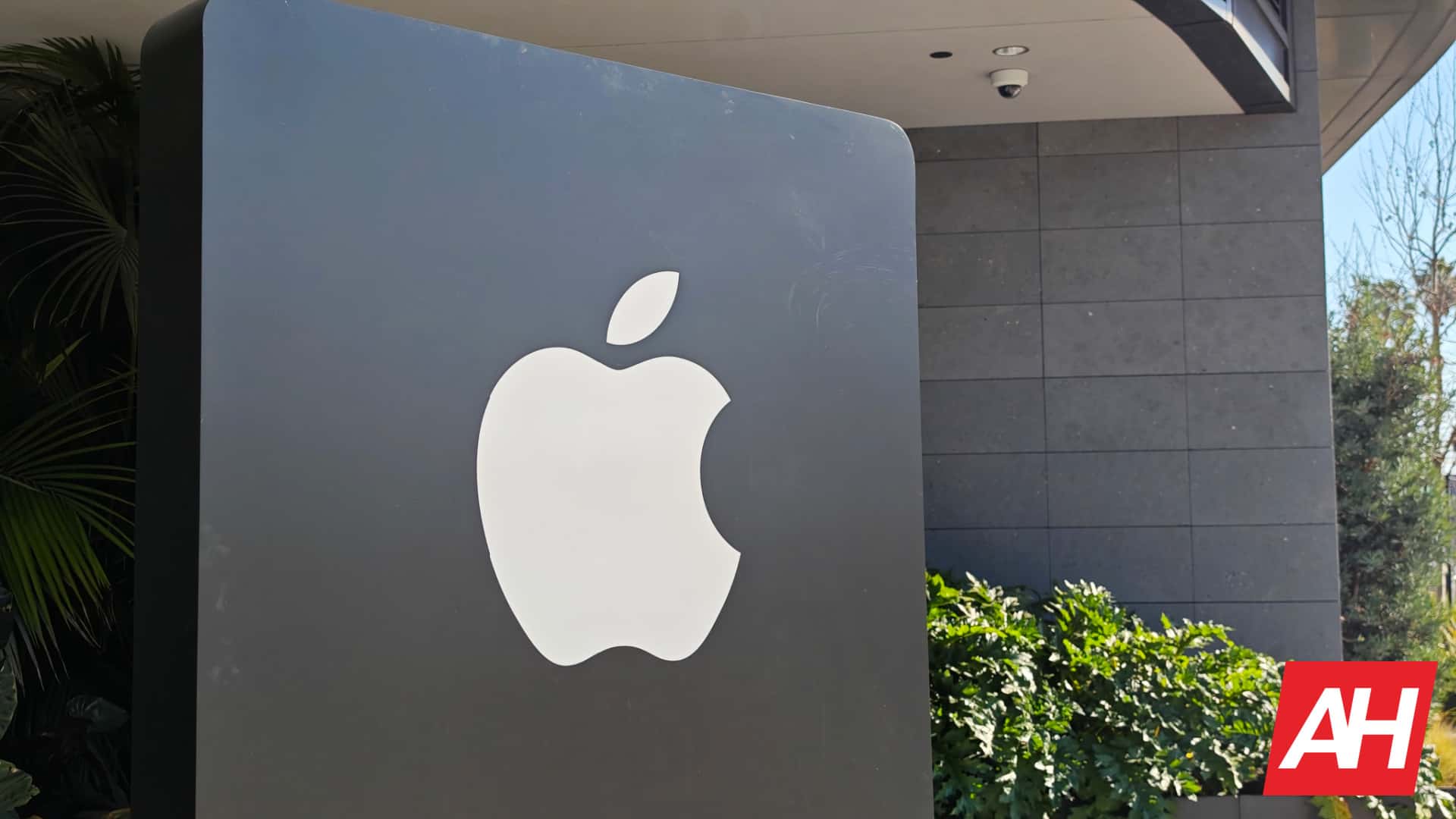
Apple is developing smart glasses that would integrate AirPods and Apple Intelligence, claims a new report. The upcoming Apple product would be lighter than the Apple Vision Pro, presumably to compete with the Meta Quest 3.
Is Apple developing smart glasses to succeed the Vision Pro?
The Apple Vision Pro is one of the most expensive Mixed Reality headsets on the market. As Apple insists, it is a “spatial computer”. The company also asks $3,499 for the headset.
The Apple Vision Pro is a fully integrated product. It is a miniature computer that’s powered by a dedicated external battery. This makes the device bulky and expensive.
According to Bloomberg’s Mark Gurman, Apple is aware that it needs to “rethink its approach to headsets”. However, he speculates the company is currently unsure and hasn’t decided on its exact approach.
In his ‘Power On’ newsletter, Gurman suggested Apple could be developing smart glasses. These glasses would reportedly be extensively lighter, and presumably cheaper, than the Apple Vision Pro.
Incidentally, Apple CEO Tim Cook has previously indicated the company is moving towards smart glasses. However, he admitted the technology is too elusive at this time.
Lighter smart glasses will integrate AirPods and Apple Intelligence
Meta recently surprised the tech world with an aggressively priced Meta Quest 3S and the Orion Augmented Reality headset with a holographic display. Simply put, the company seems to have surged ahead in the VR world.
Apple could be developing something similar. However, the company might not embed batteries, sensors, smart display tech, and cameras, into glasses. Gurman suggests a new pair of AirPods would be a critical component for the Apple smart glasses.
The new AirPods would feature cameras. When paired with smart glasses, they would deliver visual and audio information about the outside world to the wearer.
Needless to say, Apple Intelligence, could play an important role in processing the data and delivering information. But to make the smart glasses lighter, Apple could try and outsource the processing to the iPhone. Some reports suggest that this approach would turn the smart glasses into an iPhone accessory.
Servers computers
Bolein 27U 600mm * 600mm Network Server Rack Cabinet

Bolein 27U 600mm*600mm free-standing DDF network rack enclosure server cabinet can be used in data centers, monitoring rooms, CCTV, and other places.
The front toughened glass door with a spring lock, side panels are removable, steel rear door with a round lock.
Assembled frame structure.
Cable entry and ventilation hole on top cover and bottom panel.
The main material is SPCC cold-rolled steel. Mounting profile thickness is 2.0mm, mounting angle thickness is 1.5mm, others thickness is 1.2mm.
The degree of protection is IP20 and it can be customized.
Standard static loading capacity is 800 KG, and it can be increased to 1000 KG by adding auxiliary mounting angle if need.
Adjustable feet and heavy-duty casters.
Cable manager, cooling fan, fixed shelf, sliding tray, patch panel, and other rack accessories are available.
If you are interested in it, you can contact us. We are also able to provide you the OEM racks. Whatsapp: +8613467017439; Mobile/Wechat : +8617854120882; Skype: live:brenda123456fanhua; Email: sales3_cd@bolein.net; Site: www.bolein.net; bolein.en.alibaba.com
source
Technology
Football Manager 25 is out on November 26
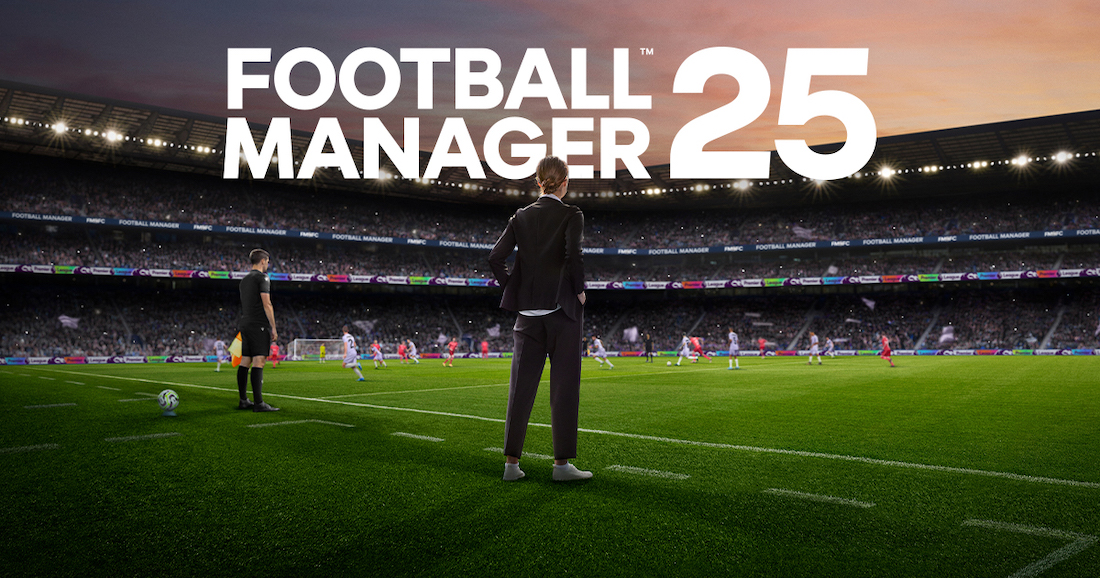
Football Manager 25 is finally on its way, with Sports Interactive confirming the news and announcing a release date. The game will arrive for PC, Mac, Xbox and PS5 on November 26, just in time for some Thanksgiving gameplay. At the same time, FM25 Mobile is launching exclusively on Netflix, while FM25 Touch should come to Nintendo Switch on December 3.
FM25 comes with two big updates: a switch to the Unity engine (everywhere except mobile) and women’s football (or soccer, depending on where you’re reading this from) arriving into the same world as the men’s teams. Sega-owned SI first announced the development of women’s games in 2021, claiming it would take a while to do in order to provide the same depth as the men’s ones. Last year, it confirmed women’s teams would be in FM25.
In a statement, Sports Interactive Studio Director Miles Jacobson said, “The world gets to see two of our multi-year projects come to fruition: the switch to the Unity engine and the introduction of Women’s Football. It gives us a real sense of achievement to begin sharing our hard work with you and we’re really looking forward to showing you more of the game in the weeks before the game’s release.”
Right now, anyone who pre-orders FM25 for PC or Mac from a SEGA-approved digital retailer will get 10 percent off. SI will announce pre-orders for Xbox and PS5 editions later.
Servers computers
Servidores Cisco UCS C210 M2 Rack Server

Esta es un vista rapida a los servidores Cisco en 3D del modelo UCS 210 M2 Rack Server. Suitable for stand-alone applications, including Cisco Unified Communications Ver 8.0+
*Economical, High-Capacity, Internal Storage
The Cisco UCS C210 M2 server is a general- purpose, 2-socket, 2 rack unit (RU) rack-mount server that balances performance, density, and efficiency for storage-intensive workloads. The system is built for applications such as network file servers and appliances, storage servers, database servers, and content-delivery servers.
Up to two Intel Xeon 5500 or 5600 Series multicore processors
Up to 192GB of industry-standard double data rate (DDR3) main memory
Up to 16 internal small form-factor (SFF), SAS, or SATA disk drives; up to 16 TB total
RAID support:
Built-in RAID 0 and 1 support for up to four SATA drives
RAID 0 and 1 support for up to four SAS or SATA drives with optional mezzanine card
RAID 0, 1, 5, 6, 10, 50, and 60 support for up to 16 SAS or SATA drives with up to two optional LSI MegaRAID Controllers
Five full-height PCI Express (PCIe) slots: two full-height, full-length x8 PCIe card slots and three full-height, half-length x8 PCI card slots, all with x16 connectors .
source
-

 Womens Workouts7 days ago
Womens Workouts7 days ago3 Day Full Body Women’s Dumbbell Only Workout
-

 Technology2 weeks ago
Technology2 weeks agoWould-be reality TV contestants ‘not looking real’
-

 Science & Environment2 weeks ago
Science & Environment2 weeks ago‘Running of the bulls’ festival crowds move like charged particles
-

 News1 week ago
News1 week agoOur millionaire neighbour blocks us from using public footpath & screams at us in street.. it’s like living in a WARZONE – WordupNews
-

 Science & Environment2 weeks ago
Science & Environment2 weeks agoHow to wrap your mind around the real multiverse
-

 Science & Environment2 weeks ago
Science & Environment2 weeks agoHyperelastic gel is one of the stretchiest materials known to science
-

 Science & Environment2 weeks ago
Science & Environment2 weeks agoMaxwell’s demon charges quantum batteries inside of a quantum computer
-

 Science & Environment2 weeks ago
Science & Environment2 weeks agoSunlight-trapping device can generate temperatures over 1000°C
-

 Science & Environment2 weeks ago
Science & Environment2 weeks agoHow to unsnarl a tangle of threads, according to physics
-

 Science & Environment2 weeks ago
Science & Environment2 weeks agoLiquid crystals could improve quantum communication devices
-

 Science & Environment2 weeks ago
Science & Environment2 weeks agoPhysicists are grappling with their own reproducibility crisis
-

 Science & Environment2 weeks ago
Science & Environment2 weeks agoITER: Is the world’s biggest fusion experiment dead after new delay to 2035?
-

 News2 weeks ago
News2 weeks agoYou’re a Hypocrite, And So Am I
-

 Science & Environment2 weeks ago
Science & Environment2 weeks agoQuantum ‘supersolid’ matter stirred using magnets
-

 Science & Environment2 weeks ago
Science & Environment2 weeks agoWhy this is a golden age for life to thrive across the universe
-

 Sport2 weeks ago
Sport2 weeks agoJoshua vs Dubois: Chris Eubank Jr says ‘AJ’ could beat Tyson Fury and any other heavyweight in the world
-

 Science & Environment2 weeks ago
Science & Environment2 weeks agoQuantum forces used to automatically assemble tiny device
-

 Science & Environment2 weeks ago
Science & Environment2 weeks agoNuclear fusion experiment overcomes two key operating hurdles
-

 Science & Environment2 weeks ago
Science & Environment2 weeks agoLaser helps turn an electron into a coil of mass and charge
-

 Science & Environment2 weeks ago
Science & Environment2 weeks agoCaroline Ellison aims to duck prison sentence for role in FTX collapse
-

 Science & Environment2 weeks ago
Science & Environment2 weeks agoTime travel sci-fi novel is a rip-roaringly good thought experiment
-

 Science & Environment2 weeks ago
Science & Environment2 weeks agoNerve fibres in the brain could generate quantum entanglement
-

 CryptoCurrency2 weeks ago
CryptoCurrency2 weeks agoCardano founder to meet Argentina president Javier Milei
-

 Science & Environment1 week ago
Science & Environment1 week agoMeet the world's first female male model | 7.30
-

 News2 weeks ago
News2 weeks agoIsrael strikes Lebanese targets as Hizbollah chief warns of ‘red lines’ crossed
-

 Womens Workouts1 week ago
Womens Workouts1 week agoBest Exercises if You Want to Build a Great Physique
-

 CryptoCurrency2 weeks ago
CryptoCurrency2 weeks agoEthereum is a 'contrarian bet' into 2025, says Bitwise exec
-

 Science & Environment2 weeks ago
Science & Environment2 weeks agoWhy we need to invoke philosophy to judge bizarre concepts in science
-

 CryptoCurrency2 weeks ago
CryptoCurrency2 weeks agoDZ Bank partners with Boerse Stuttgart for crypto trading
-

 Womens Workouts1 week ago
Womens Workouts1 week agoEverything a Beginner Needs to Know About Squatting
-

 News2 weeks ago
News2 weeks agoBrian Tyree Henry on voicing young Megatron, his love for villain roles
-

 News2 weeks ago
News2 weeks ago▶️ Media Bias: How They Spin Attack on Hezbollah and Ignore the Reality
-

 Science & Environment2 weeks ago
Science & Environment2 weeks agoA slight curve helps rocks make the biggest splash
-

 Science & Environment2 weeks ago
Science & Environment2 weeks agoQuantum time travel: The experiment to ‘send a particle into the past’
-

 CryptoCurrency2 weeks ago
CryptoCurrency2 weeks agoBitcoin miners steamrolled after electricity thefts, exchange ‘closure’ scam: Asia Express
-

 CryptoCurrency2 weeks ago
CryptoCurrency2 weeks agoDorsey’s ‘marketplace of algorithms’ could fix social media… so why hasn’t it?
-

 CryptoCurrency2 weeks ago
CryptoCurrency2 weeks agoRedStone integrates first oracle price feeds on TON blockchain
-

 CryptoCurrency2 weeks ago
CryptoCurrency2 weeks agoBitcoin bulls target $64K BTC price hurdle as US stocks eye new record
-

 CryptoCurrency2 weeks ago
CryptoCurrency2 weeks agoBlockdaemon mulls 2026 IPO: Report
-

 CryptoCurrency2 weeks ago
CryptoCurrency2 weeks agoCoinbase’s cbBTC surges to third-largest wrapped BTC token in just one week
-

 News1 week ago
News1 week agoFour dead & 18 injured in horror mass shooting with victims ‘caught in crossfire’ as cops hunt multiple gunmen
-

 Womens Workouts7 days ago
Womens Workouts7 days ago3 Day Full Body Toning Workout for Women
-

 Travel6 days ago
Travel6 days agoDelta signs codeshare agreement with SAS
-

 Politics5 days ago
Politics5 days agoHope, finally? Keir Starmer’s first conference in power – podcast | News
-

 Sport2 weeks ago
Sport2 weeks agoUFC Edmonton fight card revealed, including Brandon Moreno vs. Amir Albazi headliner
-

 Science & Environment2 weeks ago
Science & Environment2 weeks agoA new kind of experiment at the Large Hadron Collider could unravel quantum reality
-

 Technology2 weeks ago
Technology2 weeks agoiPhone 15 Pro Max Camera Review: Depth and Reach
-

 Science & Environment2 weeks ago
Science & Environment2 weeks agoHow one theory ties together everything we know about the universe
-

 CryptoCurrency2 weeks ago
CryptoCurrency2 weeks agoCrypto scammers orchestrate massive hack on X but barely made $8K
-

 Science & Environment2 weeks ago
Science & Environment2 weeks agoTiny magnet could help measure gravity on the quantum scale
-

 Science & Environment2 weeks ago
Science & Environment2 weeks agoFuture of fusion: How the UK’s JET reactor paved the way for ITER
-

 Science & Environment2 weeks ago
Science & Environment2 weeks agoHow do you recycle a nuclear fusion reactor? We’re about to find out
-

 CryptoCurrency2 weeks ago
CryptoCurrency2 weeks agoLow users, sex predators kill Korean metaverses, 3AC sues Terra: Asia Express
-

 CryptoCurrency2 weeks ago
CryptoCurrency2 weeks agoSEC asks court for four months to produce documents for Coinbase
-

 CryptoCurrency2 weeks ago
CryptoCurrency2 weeks ago‘No matter how bad it gets, there’s a lot going on with NFTs’: 24 Hours of Art, NFT Creator
-
Business2 weeks ago
How Labour donor’s largesse tarnished government’s squeaky clean image
-

 News2 weeks ago
News2 weeks agoBrian Tyree Henry on voicing young Megatron, his love for villain roles
-

 Womens Workouts1 week ago
Womens Workouts1 week agoHow Heat Affects Your Body During Exercise
-

 Womens Workouts1 week ago
Womens Workouts1 week agoKeep Your Goals on Track This Season
-

 News2 weeks ago
News2 weeks agoChurch same-sex split affecting bishop appointments
-

 Technology2 weeks ago
Technology2 weeks agoFivetran targets data security by adding Hybrid Deployment
-

 Science & Environment2 weeks ago
Science & Environment2 weeks agoBeing in two places at once could make a quantum battery charge faster
-

 CryptoCurrency2 weeks ago
CryptoCurrency2 weeks ago$12.1M fraud suspect with ‘new face’ arrested, crypto scam boiler rooms busted: Asia Express
-

 Science & Environment2 weeks ago
Science & Environment2 weeks agoUK spurns European invitation to join ITER nuclear fusion project
-

 CryptoCurrency2 weeks ago
CryptoCurrency2 weeks agoDecentraland X account hacked, phishing scam targets MANA airdrop
-

 CryptoCurrency2 weeks ago
CryptoCurrency2 weeks agoCertiK Ventures discloses $45M investment plan to boost Web3
-

 CryptoCurrency2 weeks ago
CryptoCurrency2 weeks agoBeat crypto airdrop bots, Illuvium’s new features coming, PGA Tour Rise: Web3 Gamer
-

 CryptoCurrency2 weeks ago
CryptoCurrency2 weeks agoTelegram bot Banana Gun’s users drained of over $1.9M
-

 CryptoCurrency2 weeks ago
CryptoCurrency2 weeks ago‘Silly’ to shade Ethereum, the ‘Microsoft of blockchains’ — Bitwise exec
-

 CryptoCurrency2 weeks ago
CryptoCurrency2 weeks agoEthereum falls to new 42-month low vs. Bitcoin — Bottom or more pain ahead?
-
Business2 weeks ago
Thames Water seeks extension on debt terms to avoid renationalisation
-
Politics2 weeks ago
‘Appalling’ rows over Sue Gray must stop, senior ministers say | Sue Gray
-

 News1 week ago
News1 week agoWhy Is Everyone Excited About These Smart Insoles?
-

 Politics2 weeks ago
Politics2 weeks agoTrump says he will meet with Indian Prime Minister Narendra Modi next week
-

 Science & Environment2 weeks ago
Science & Environment2 weeks agoSingle atoms captured morphing into quantum waves in startling image
-

 Technology2 weeks ago
Technology2 weeks agoCan technology fix the ‘broken’ concert ticketing system?
-

 Science & Environment2 weeks ago
Science & Environment2 weeks agoHow Peter Higgs revealed the forces that hold the universe together
-

 Health & fitness2 weeks ago
Health & fitness2 weeks agoThe secret to a six pack – and how to keep your washboard abs in 2022
-

 CryptoCurrency2 weeks ago
CryptoCurrency2 weeks ago2 auditors miss $27M Penpie flaw, Pythia’s ‘claim rewards’ bug: Crypto-Sec
-

 CryptoCurrency2 weeks ago
CryptoCurrency2 weeks agoJourneys: Robby Yung on Animoca’s Web3 investments, TON and the Mocaverse
-

 CryptoCurrency2 weeks ago
CryptoCurrency2 weeks agoLouisiana takes first crypto payment over Bitcoin Lightning
-

 CryptoCurrency2 weeks ago
CryptoCurrency2 weeks ago‘Everything feels like it’s going to shit’: Peter McCormack reveals new podcast
-

 Science & Environment2 weeks ago
Science & Environment2 weeks agoA tale of two mysteries: ghostly neutrinos and the proton decay puzzle
-

 CryptoCurrency2 weeks ago
CryptoCurrency2 weeks agoSEC sues ‘fake’ crypto exchanges in first action on pig butchering scams
-

 CryptoCurrency2 weeks ago
CryptoCurrency2 weeks agoBitcoin price hits $62.6K as Fed 'crisis' move sparks US stocks warning
-

 CryptoCurrency2 weeks ago
CryptoCurrency2 weeks agoVonMises bought 60 CryptoPunks in a month before the price spiked: NFT Collector
-

 CryptoCurrency2 weeks ago
CryptoCurrency2 weeks agoVitalik tells Ethereum L2s ‘Stage 1 or GTFO’ — Who makes the cut?
-

 News2 weeks ago
News2 weeks agoBrian Tyree Henry on his love for playing villains ahead of “Transformers One” release
-

 News1 week ago
News1 week agoBangladesh Holds the World Accountable to Secure Climate Justice
-

 Womens Workouts1 week ago
Womens Workouts1 week agoWhich Squat Load Position is Right For You?
-

 TV1 week ago
TV1 week agoCNN TÜRK – 🔴 Canlı Yayın ᴴᴰ – Canlı TV izle
-

 Science & Environment1 week ago
Science & Environment1 week agoCNN TÜRK – 🔴 Canlı Yayın ᴴᴰ – Canlı TV izle
-

 Technology6 days ago
Technology6 days agoRobo-tuna reveals how foldable fins help the speedy fish manoeuvre
-

 Technology2 weeks ago
Technology2 weeks agoIs carbon capture an efficient way to tackle CO2?
-

 Science & Environment2 weeks ago
Science & Environment2 weeks agoThe physicist searching for quantum gravity in gravitational rainbows
-

 Fashion Models2 weeks ago
Fashion Models2 weeks agoMixte
-

 Politics2 weeks ago
Politics2 weeks agoLabour MP urges UK government to nationalise Grangemouth refinery
-

 Health & fitness2 weeks ago
Health & fitness2 weeks agoThe maps that could hold the secret to curing cancer
-

 CryptoCurrency2 weeks ago
CryptoCurrency2 weeks agoHelp! My parents are addicted to Pi Network crypto tapper
-

 CryptoCurrency2 weeks ago
CryptoCurrency2 weeks agoCZ and Binance face new lawsuit, RFK Jr suspends campaign, and more: Hodler’s Digest Aug. 18 – 24


You must be logged in to post a comment Login